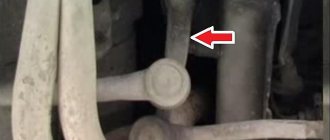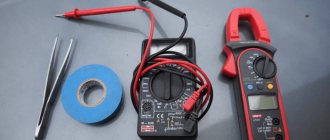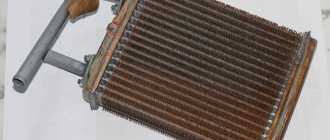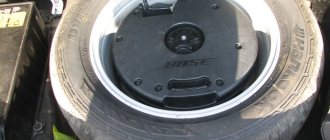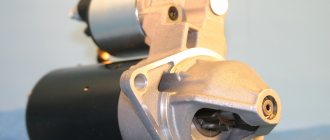Every driver knows that there is a device called a tachometer on the dashboard of a car. However, the principle of its operation, what exactly it measures is not known to everyone. The tachometer is a very important device in a car. It shows the engine crankshaft speed, that is, it actually shows the efficiency of the car engine. But this is only one of the functions of this device. Based on its indicators (the tachometer needle jumps or displays incorrect results), one can draw conclusions about the presence of certain malfunctions in the car.
Why does the tachograph needle jump: causes of malfunction?
Before you figure out why the tachometer needle is jumping, or try to find the cause of incorrect indicators in a malfunction of the engine, wiring or other elements of the machine, you should check the operation of the device itself. It is worth checking the spark plugs, wiring, contacts through which it is connected, and checking its settings. If the tachograph was changed or disassembled before this, then this is the most likely factor for incorrect indicators on the device. To fix the problem, just check its settings, if necessary, adjust it from behind using the toggle switch, check the zero position and correct installation.
If all of the above descriptions have been done, but the tachograph still does not work correctly during ignition or at idle, then you already need to deal with the engine or the car’s electrical wiring.
Electrical problems are a fairly common explanation for why the VAZ (Lada) tachometer needle jumps. Owners of other car brands complain much less often about such problems. To eliminate a wiring malfunction, the first thing you need to do is assess the condition of the distributor and the capacitor located on it. If it malfunctions, no voltage is supplied to the ignition coil. Additionally, you should check the contacts, the quality of the connections, the voltage at the plus and minus. A breakdown of the coil itself also happens, which will also affect the display of data on the tachograph.
In the same way, it is necessary to test the entire ignition system. Here it is important to assess the condition of high-voltage electrical wires, their wear, and the presence of damage to the insulation. All of the above can interfere with normal sparking.
If a problem with the electrical wiring is excluded, then it’s worth thinking about the operation of the motor itself. A common reason why the tachometer needle twitches may be problems with the quality of the fuel or its supply system. In fuel-injected cars, this may be due to an incorrect flame in the injectors. With this malfunction, you cannot do without a trip to a car mechanic. Cleaning of nozzles and atomizers and their adjustment are carried out only using special equipment (stand). But if you don’t have an injector, but a carburetor, then the likely cause is a clogged idle jet, which can be easily cleaned at home.
What does the tachometer jump at high speeds indicate?
If the tachometer needle jumps during a trip or at high speeds, then the problem is also associated, as a rule, with the car’s engine. But before contacting a car mechanic, you can independently check the presence of fuel in the tank, inspect the camshaft drive chain, the timing belt that connects the crankshaft and the camshaft; perhaps it is loose and needs to be tightened. These are the main and frivolous reasons that can cause interruptions in engines and jumps in its speed.
If no visible problems are found with these elements, then you should go to an auto mechanic. Delay and failure to respond to a signal such as unstable tachograph operation can lead to serious damage to the vehicle’s cylinder-piston system and costly repairs.
It is better not to engage in diagnostics and independent repairs if the tachometer needle is floating. You should trust specialists who, using special equipment, will identify and eliminate the causes of the failure.
The tachometer informs the driver about the engine speed, allowing you to select the most profitable operating mode for the engine. If the tachometer needle jumps, the driver does not receive reliable information. The structure of the tachometer, its types, typical malfunctions and methods for eliminating them are described in this article.
What's the result?
If the driver notices malfunctions in the tachometer, it is important to immediately determine the cause of the malfunction. It should be borne in mind that problems with the device itself are not critical for the car.
However, if the tachometer jumps due to problems with the engine, this symptom indicates the need for diagnostics. Ignoring this recommendation and further operating the vehicle may cause serious internal combustion engine malfunctions.
We also recommend reading the article about why the speed sensor in the car does not work. From this article you will learn why the speed sensor does not work, as well as how to check the specified sensor.
For example, breakdowns that can be caused by misfires and other failures can quickly destroy the engine. For this reason, it is important to monitor the tachometer while operating the car. If it is noticeable that the engine speed is floating or jumping, it is necessary to accurately determine and properly eliminate the malfunction.
Types of tachometers
There are two types of tachometers: analog and digital.
Analog instruments use an induction magnetic coil, thanks to which the number of crankshaft revolutions is shown by an arrow moving along the scale. This device is installed as standard on most machines. It is almost the same size as the speedometer and is located next to it on the dashboard. This arrangement of the device is convenient for the driver, since it is always in front of the eyes and makes it possible not to be distracted from the situation on the road.
In digital devices, information is reflected on a liquid crystal or diode display. The number of revolutions is transmitted either by a magnetic sensor that records the passage of a specific point on the crankshaft near the measuring device. An electronic sensor – optocoupler – can be installed. It generates a beam of light and determines the rotation frequency by its reflection from nearby objects. The digital device is useful when tuning engines and operations with electronic ignition units.
Connecting the tachometer VAZ 2106
To correctly connect the tachometer, you need to study what each element of the outgoing wiring is intended for. Let's consider this issue in detail:
- The wire with white insulation is intended for connection with the backlight of the device.
- A thick wire with red insulation is integrated into the ignition switch circuit through a safety element, where voltage comes in when the ignition switch is in the “on” position.
- A white insulated wire with a black streak serves as a negative contact for connecting to the body part.
- The contact with the brown wire is connected to the “K+” output connector of the reel, it is these pulses that regulate the values of the device.
- The black wire is connected to the battery charging functionality relay, located on the right in the engine compartment.
- A gray wire with a black streak is connected to the DDM located on the left in the engine compartment.
- The tachometer connection diagram itself is not difficult. As a rule, such devices have three outputs, one from the reel, another from the positive wire of the ignition switch, and the third from the negative contact of the connection to the body part.
TX-193 is a complex device with many integrated elements, therefore the electronic tachometer on the VAZ 2106 is supplied in a non-separable form and car enthusiasts should not disassemble it. Car enthusiasts tuning the “six” prefer to install an LED tachometer from Western manufacturers, which has a respectable appearance, as a device indicating the number of revolutions of the power plant.
It is considered advisable to install such a gadget in a specialized repair shop, where they carry out repair and maintenance work on the car’s electronics.
Device
The tachometer makes it possible to switch to another speed in time so that the engine operates in economical mode. A novice driver can focus on the position of the arrow. If it approaches the red zone, then you need to shift to a higher gear. In addition, the device is used to adjust the operation of the power unit at idle and control the crankshaft speed while driving (author of the video - Avto-Blogger.ru).
Analog tachometers are reliable and simple measuring instruments.
Their design includes the following elements:
- pointer arrow;
- graduated scale;
- an electromagnetic coil with a shielded winding;
- cable for transmitting information from the crankshaft.
The operation of the device is based on the electronic principle. The signal from the crankshaft is transmitted through wires to a microcircuit, thanks to which the needle moves along the dial. Information can be taken directly from the shaft, from the generator or from other power take-off shafts. In this case, the original signal is converted with a certain coefficient.
Possible malfunctions and ways to eliminate them
A jumping meter needle indicates a problem with the car. Repair depends on the cause of the problem.
You can list a number of reasons for device malfunction and ways to eliminate them:
- If there are poor contacts or damaged wiring, the source of signals from the motor to the device is lost. To detect a wiring fault, you need to check the electrical wires. If damage or breaks are found, the wires must be replaced. Poor contacts are often the result of oxidative processes. To restore functionality, the contacts need to be cleaned.
- Malnutrition. You should check the voltage on the positive and negative wires, as well as ground.
- If the tachometer needle floats or does not drop to zero, the reason may be a faulty sensor. In this case, it must be replaced.
- In the case of a digital device, it may not work if the LED screen is faulty. Such damage is possible with prolonged use. The display cannot be repaired; it can only be replaced with a working device.
- If the tachometer needle jumps at idle, there may be problems with the distributor. It is necessary to check the status of its contacts. In addition, the cause may be the distributor capacitor located on the cover. It is often punctured during operation.
- If the tachometer needle jumps, then the reason may be a violation of the integrity of the ignition system circuit. It needs to be checked and the fault corrected.
- The needle may move erratically after replacing the device. In this case, you need to configure it: adjust the position of the device itself, bring the pointer to zero, check the correct installation and connection. Adjustment is carried out using a toggle switch located on the rear panel of the device.
- If the needle jumps at high speeds, then the reason is the failure of the switch, which needs to be replaced. Problems with the engine are also possible, but these problems can only be detected by a specialist using special equipment.
- The cause of the malfunction may be the replacement of high-voltage wires of the ignition system, their wear or damage.
- The pointer may drop to the lower limit or twitch as the shape of the pulse on the coil changes. The reason is that the cross-section of standard cables has a different resistance. To resolve this problem, you need to reduce the value of the external resistor located on the tachometer microboard.
The principle of operation of the tachometer
The electromechanical tachometer of the VAZ 2106 received the nomenclature designation TX-193 and in its operation uses the principle of producing multiple measurements of electrical voltage signals arising per unit of time in the low-voltage circuit of the ignition system. The normal operation of the VAZ 2106 tachometer is designed in such a way that in the “six” power plant, which is a 4-stroke gasoline engine with 4 in-line cylinders, during one circular rotation of the distributor rotor its contacts go through the closing and opening phase four times.
This leads to the formation of 4 electrical potential difference signals during the same period, or 2 during one full circular rotation of the crankshaft. This allows the device readings to display a direct proportion to the frequency response of the crankshaft rotation, which is related to the frequency characteristics of the incoming electrical signals.
The tachometer needle jumps. Auto 2106
I'm not experienced in car repairs.
There is a problem with the car (VAZ 2106), the tachometer needle jumps back and forth. Sometimes it goes silent when you press the buzzer and the arrow jumps. You blink your headlights and the car stalls.
There are approximate types of faults: Generator.
I would like to hear advice and who could help fix this. Or which station to contact. I applied for any, the car was enough for a day. and again such nonsense.
The same thing happened when turning on the turn signals - it was resolved by cleaning the contacts at the steering column switches and replacing the fuses with high-quality ones, 80 rubles per pack.
VAZ-2106 - designed in Italy
